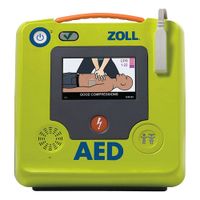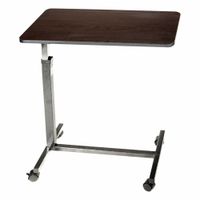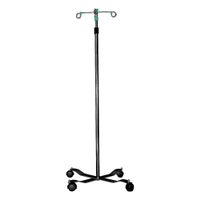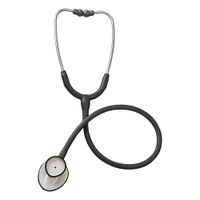Call +(254) 703 030 000 / 751 483 999 / 721 704 777
.....Read More
Frequently Asked Questions
What are the essential medical supplies needed for emergency treatment?
Essential medical supplies for emergency treatment include:
1. **Personal Protective Equipment (PPE):** Gloves, masks, gowns, and face shields to protect both the patient and healthcare provider.
2. **Basic First Aid Supplies:** Bandages, adhesive tape, gauze, antiseptic wipes, and antibiotic ointment for wound care.
3. **Hemostatic Agents:** Products like QuikClot to control severe bleeding.
4. **Tourniquets:** For stopping blood flow in case of limb injuries.
5. **Splints and Slings:** To immobilize fractures and sprains.
6. **CPR Equipment:** Pocket masks or bag valve masks for resuscitation.
7. **Automated External Defibrillator (AED):** For cardiac arrest situations.
8. **Medications:** Pain relievers, antihistamines, epinephrine auto-injectors for allergic reactions, and aspirin for heart attacks.
9. **IV Supplies:** Catheters, saline, and IV start kits for fluid administration.
10. **Suction Devices:** To clear airways.
11. **Oxygen Supplies:** Portable oxygen tanks and masks for respiratory distress.
12. **Diagnostic Tools:** Stethoscope, blood pressure cuff, and thermometer for vital signs assessment.
13. **Syringes and Needles:** For medication administration.
14. **Burn Treatment Supplies:** Burn dressings and gels.
15. **Emergency Blankets:** To prevent hypothermia.
16. **Flashlight and Batteries:** For visibility in low-light situations.
17. **Scissors and Tweezers:** For cutting clothing and removing debris.
18. **Emergency Manual:** Guide for medical procedures and protocols.
19. **Communication Devices:** Radios or phones for contacting emergency services.
20. **Documentation Supplies:** Notepads and pens for recording patient information and treatment provided.
How do AED and CPR equipment work to restore heart rhythm?
Automated External Defibrillators (AEDs) and Cardiopulmonary Resuscitation (CPR) are critical in responding to cardiac arrest, a condition where the heart stops beating effectively.
AEDs are portable devices designed to diagnose and treat life-threatening cardiac arrhythmias, specifically ventricular fibrillation and pulseless ventricular tachycardia. When the heart's electrical activity becomes erratic, it cannot pump blood effectively. An AED analyzes the heart's rhythm through adhesive electrode pads placed on the patient's chest. If an abnormal rhythm is detected, the AED instructs the user to deliver an electric shock. This shock depolarizes the heart's electrical system, stopping the arrhythmia and allowing the heart's natural pacemaker to re-establish a normal rhythm.
CPR, on the other hand, is a manual technique that combines chest compressions and rescue breaths to maintain circulatory flow and oxygenation during cardiac arrest. Chest compressions mimic the heart's pumping action, helping to circulate blood to vital organs, especially the brain and heart. Rescue breaths provide oxygen to the lungs, which is then circulated by the compressions. CPR is crucial in maintaining tissue viability until advanced care, such as defibrillation, can be administered.
Together, AEDs and CPR work synergistically. CPR sustains life by ensuring blood flow and oxygenation, while the AED addresses the underlying electrical problem. Immediate CPR and early defibrillation significantly increase the chances of survival and recovery by restoring a viable heart rhythm and preventing brain damage due to prolonged oxygen deprivation.
What equipment is necessary for airway opening and oxygen delivery?
To ensure effective airway opening and oxygen delivery, several pieces of equipment are essential:
1. **Bag-Valve-Mask (BVM):** A handheld device used to provide positive pressure ventilation to patients who are not breathing or not breathing adequately. It consists of a self-inflating bag, a one-way valve, and a face mask.
2. **Oropharyngeal Airway (OPA):** A curved plastic device inserted into the mouth to prevent the tongue from obstructing the airway. It is used in unconscious patients without a gag reflex.
3. **Nasopharyngeal Airway (NPA):** A soft, flexible tube inserted through the nose to maintain an open airway. It is suitable for patients with an intact gag reflex or those who cannot tolerate an OPA.
4. **Suction Device:** Used to clear secretions, blood, or vomit from the airway to prevent aspiration and ensure a clear path for air.
5. **Oxygen Cylinder:** A portable tank containing compressed oxygen, used to deliver supplemental oxygen to patients in need.
6. **Oxygen Regulator and Flowmeter:** Attached to the oxygen cylinder to control the flow rate of oxygen delivered to the patient.
7. **Oxygen Delivery Devices:**
- **Nasal Cannula:** A lightweight tube with prongs that fit into the nostrils, used for low-flow oxygen delivery.
- **Simple Face Mask:** Covers the nose and mouth, providing higher oxygen concentrations than a nasal cannula.
- **Non-Rebreather Mask:** A face mask with a reservoir bag, capable of delivering high concentrations of oxygen.
- **Venturi Mask:** Allows precise control of oxygen concentration, useful for patients with specific oxygen requirements.
8. **Laryngoscope and Endotracheal Tubes:** Used for intubation to secure the airway in patients who cannot maintain their airway independently.
9. **Pulse Oximeter:** A non-invasive device that measures oxygen saturation in the blood, helping to monitor the effectiveness of oxygen delivery.
These tools are crucial for maintaining airway patency and ensuring adequate oxygenation in emergency and clinical settings.
What tools do EMS and rescue teams use for emergency treatment and transport?
EMS and rescue teams utilize a variety of tools for emergency treatment and transport to ensure efficient and effective care. Key tools include:
1. **Ambulances**: Equipped with medical supplies, monitoring equipment, and space for patient care during transport.
2. **Defibrillators**: Automated External Defibrillators (AEDs) and manual defibrillators are used to restore normal heart rhythm in cardiac arrest cases.
3. **Oxygen Delivery Systems**: Portable oxygen tanks and masks provide supplemental oxygen to patients with respiratory distress.
4. **Ventilators**: Portable ventilators assist patients who are unable to breathe adequately on their own.
5. **Monitors**: Vital signs monitors track heart rate, blood pressure, oxygen saturation, and other critical parameters.
6. **Spinal Immobilization Devices**: Backboards and cervical collars stabilize patients with potential spinal injuries.
7. **Splints and Bandages**: Used to immobilize fractures and control bleeding.
8. **Stair Chairs and Stretchers**: Facilitate safe patient movement and transport, especially in confined spaces.
9. **Medications**: EMS teams carry a range of medications for pain relief, allergic reactions, cardiac events, and more.
10. **IV Supplies**: Intravenous lines and fluids are used for hydration and medication administration.
11. **Extrication Tools**: Hydraulic tools like the Jaws of Life are used to free patients trapped in vehicles.
12. **Personal Protective Equipment (PPE)**: Gloves, masks, and gowns protect EMS personnel from exposure to infectious diseases.
13. **Communication Devices**: Radios and mobile devices ensure coordination with hospitals and other emergency services.
14. **Rescue Boats and Helicopters**: Used for water rescues and rapid transport in remote or inaccessible areas.
These tools, combined with the expertise of EMS personnel, are crucial for providing timely and effective emergency care.
What supplies are required for emergency and exam room settings?
Emergency and exam room settings require a comprehensive array of supplies to ensure efficient and effective patient care. Essential supplies include:
1. **Medical Equipment**:
- Examination tables and chairs
- Diagnostic tools (stethoscopes, otoscopes, ophthalmoscopes)
- Blood pressure monitors and thermometers
- ECG machines and defibrillators
- Pulse oximeters and glucometers
2. **Consumables**:
- Bandages, gauze, and adhesive tapes
- Sterile gloves, masks, and gowns
- Syringes, needles, and IV supplies
- Alcohol swabs and antiseptic solutions
- Cotton balls and swabs
3. **Medications**:
- Emergency drugs (epinephrine, nitroglycerin, aspirin)
- Pain relievers and anti-inflammatory medications
- Antihistamines and bronchodilators
- Antibiotics and antivirals
- IV fluids and electrolytes
4. **Emergency Supplies**:
- Airway management tools (bag-valve masks, laryngoscopes)
- Suction devices and oxygen tanks
- Splints and immobilization devices
- Trauma kits and first aid supplies
- Resuscitation equipment
5. **Documentation and Communication**:
- Patient charts and medical forms
- Computers and electronic health record systems
- Telecommunication devices for emergency calls
6. **Hygiene and Sanitation**:
- Hand sanitizers and soap dispensers
- Disinfectants and cleaning supplies
- Waste disposal containers and biohazard bags
7. **Miscellaneous**:
- Lighting and magnification tools
- Clocks and timers
- Privacy curtains and screens
These supplies ensure readiness for a wide range of medical situations, from routine exams to critical emergencies.
How do exam room furnishings contribute to patient care?
Exam room furnishings play a crucial role in enhancing patient care by creating a comfortable, efficient, and safe environment. Firstly, ergonomic furniture, such as adjustable examination tables and chairs, ensures patient comfort and accessibility, accommodating individuals with varying mobility needs. This reduces patient anxiety and facilitates thorough examinations.
Secondly, strategically placed storage units and medical equipment within the exam room streamline the workflow for healthcare providers. Easy access to necessary tools and supplies minimizes disruptions during patient interactions, allowing for more focused and efficient care. This organization also reduces the risk of cross-contamination and infection, as supplies can be stored and accessed hygienically.
Additionally, the design and layout of exam room furnishings can influence patient privacy and confidentiality. Properly positioned screens, curtains, or partitions ensure that sensitive conversations and examinations are conducted discreetly, fostering trust between patients and healthcare providers.
The choice of materials for furnishings also impacts patient care. Non-porous, easy-to-clean surfaces help maintain a sterile environment, crucial for preventing the spread of infections. Comfortable seating in waiting areas and exam rooms can alleviate stress and improve the overall patient experience.
Furthermore, the aesthetic aspects of furnishings, such as color schemes and lighting, can affect patient mood and perception of care quality. A well-designed, welcoming environment can enhance patient satisfaction and encourage positive health outcomes.
In summary, exam room furnishings contribute significantly to patient care by ensuring comfort, efficiency, safety, and privacy, ultimately supporting a positive healthcare experience.
What is the importance of healthcare lighting in medical settings?
Healthcare lighting plays a crucial role in medical settings, impacting both patient outcomes and staff performance. Proper lighting enhances visibility, allowing healthcare professionals to perform tasks with precision, whether it's conducting surgeries, administering medication, or monitoring patient conditions. It reduces the risk of errors, which is vital in environments where accuracy is paramount.
For patients, lighting affects comfort and recovery. Natural light exposure is linked to improved mood and faster healing, as it helps regulate circadian rhythms, promoting better sleep and reducing stress. In patient rooms, adjustable lighting can cater to individual needs, providing a soothing environment conducive to rest and recovery.
Moreover, specialized lighting solutions, such as UV-C lighting, are used for disinfection, reducing the spread of infections by eliminating harmful microorganisms. This is particularly important in operating rooms and intensive care units where sterility is critical.
In addition, energy-efficient lighting systems contribute to sustainability and cost-effectiveness in healthcare facilities. LED lighting, for instance, offers long-term savings and reduces the environmental footprint, aligning with the growing emphasis on green healthcare practices.
Overall, healthcare lighting is integral to creating a safe, efficient, and healing environment, directly influencing the quality of care and operational efficiency in medical settings.
What are the key IV supplies needed for fluid and medication delivery?
Key IV supplies for fluid and medication delivery include:
1. **IV Catheters**: These are inserted into the vein to provide a pathway for fluid and medication delivery. They come in various sizes (gauges) to accommodate different patient needs.
2. **IV Tubing**: Connects the IV bag to the catheter. It includes a drip chamber, which helps control the flow rate, and a roller clamp for manual flow adjustment.
3. **IV Bags**: Contain the fluids or medications to be administered. They are available in different volumes and types, such as saline, dextrose, or lactated Ringer's solution.
4. **Needles**: Used for drawing up medications or accessing ports. Safety needles are often used to prevent needlestick injuries.
5. **Syringes**: Used to draw up and administer medications. They come in various sizes depending on the volume of medication needed.
6. **Alcohol Swabs**: Used to disinfect the skin before catheter insertion and to clean ports before accessing them.
7. **IV Poles**: Hold the IV bags at an appropriate height to ensure proper gravity flow of fluids.
8. **IV Pumps**: Electronic devices that control the rate of fluid and medication delivery, ensuring precise administration.
9. **Extension Sets**: Additional tubing that can be added to the primary IV line to provide more length or additional access points.
10. **Heparin or Saline Locks**: Used to maintain catheter patency when continuous IV access is not needed.
11. **Dressing Supplies**: Sterile dressings and tape to secure the catheter and protect the insertion site.
12. **Labels**: For identifying the contents of IV bags and tubing to prevent medication errors.
13. **Sharps Containers**: For safe disposal of needles and other sharp objects.
These supplies are essential for safe and effective IV therapy, ensuring accurate delivery of fluids and medications while minimizing the risk of infection and complications.
How do medical diagnostics tools help in monitoring vital signs?
Medical diagnostic tools play a crucial role in monitoring vital signs by providing accurate, real-time data that is essential for assessing a patient's health status. These tools include devices like thermometers, blood pressure monitors, pulse oximeters, and electrocardiograms (ECGs), each designed to measure specific vital signs such as body temperature, blood pressure, heart rate, and oxygen saturation.
Thermometers, whether digital or infrared, offer precise body temperature readings, helping to detect fever or hypothermia. Blood pressure monitors, both manual and automatic, measure systolic and diastolic pressure, crucial for diagnosing hypertension or hypotension. Pulse oximeters, often clipped onto a finger, provide quick readings of blood oxygen levels and pulse rate, essential for detecting hypoxemia or monitoring respiratory conditions.
ECGs record the electrical activity of the heart, identifying arrhythmias, ischemia, or other cardiac issues. Advanced diagnostic tools like wearable devices continuously track multiple vital signs, offering data that can be remotely monitored by healthcare providers. This continuous monitoring is particularly beneficial for patients with chronic conditions, allowing for timely interventions.
These tools enhance patient care by enabling early detection of potential health issues, guiding treatment decisions, and monitoring the effectiveness of interventions. They also empower patients to manage their health proactively, reducing the need for frequent hospital visits. Overall, medical diagnostic tools are indispensable in modern healthcare, ensuring that vital signs are accurately monitored and managed.
What are the best incontinence supplies for long-term care?
The best incontinence supplies for long-term care focus on comfort, absorbency, skin protection, and ease of use. Here are some top options:
1. **Adult Diapers**: High-absorbency adult diapers are essential for managing heavy incontinence. Brands like Depend, TENA, and Abena offer products with varying absorbency levels, ensuring protection for different needs. Look for features like breathable materials and odor control.
2. **Pull-Up Underwear**: These are ideal for individuals who prefer a more discreet option. Brands such as Always Discreet and Prevail provide pull-ups that resemble regular underwear, offering comfort and ease of use while maintaining high absorbency.
3. **Incontinence Pads and Liners**: For lighter incontinence, pads and liners from brands like Poise and Always can be used. They are designed to fit inside regular underwear and are suitable for those who experience occasional leaks.
4. **Bed Pads and Underpads**: Protecting bedding and furniture is crucial in long-term care. Reusable or disposable underpads from brands like Medline and NorthShore provide a waterproof barrier and are available in various sizes.
5. **Skin Care Products**: Prolonged exposure to moisture can lead to skin irritation. Barrier creams and wipes from brands like Calmoseptine and Cavilon help protect the skin and maintain hygiene.
6. **Catheters and External Collection Devices**: For those with severe incontinence, catheters or external collection devices like condom catheters may be necessary. These should be used under medical supervision to prevent infections.
7. **Adaptive Clothing**: Clothing with easy-open fastenings can facilitate quick changes, reducing discomfort and maintaining dignity.
Selecting the right combination of these products depends on the individual's specific needs, mobility, and lifestyle. Regular assessment and consultation with healthcare professionals can ensure optimal care and comfort.









